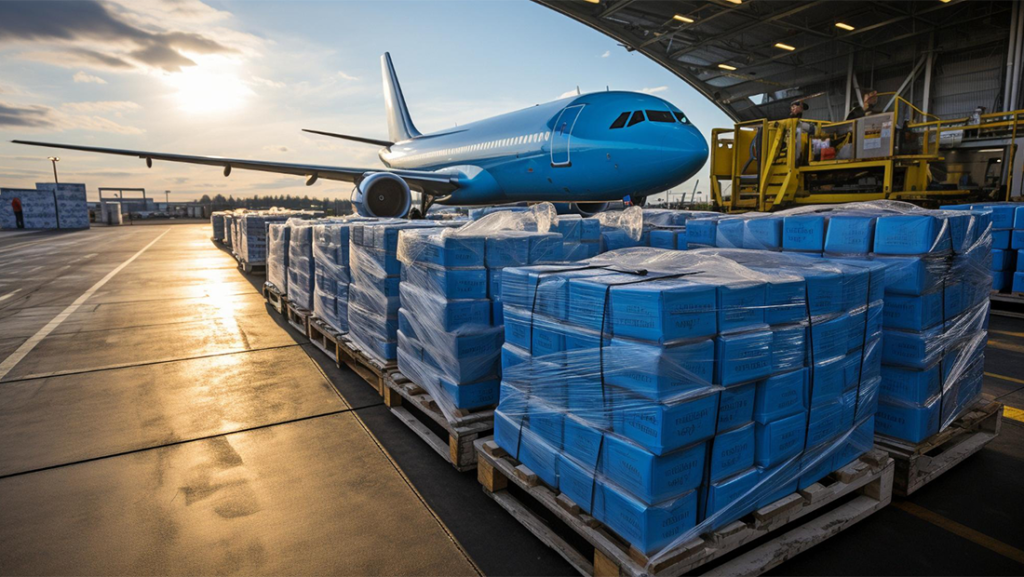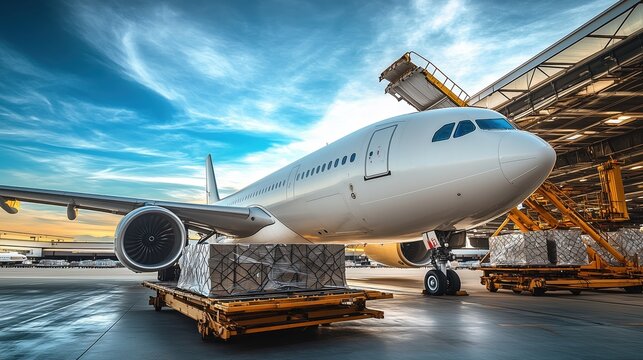In today’s fast-paced global economy, businesses need efficient and reliable methods to transport goods across international borders.
Airport-to-airport shipping is a popular choice for businesses seeking speed, reliability, and flexibility.
This comprehensive guide will delve into the intricacies of airport-to-airport shipping, exploring its benefits, challenges, and best practices.
Table of Contents
What is Airport to Airport Shipping?
Imagine your package taking a direct flight from one airport to another, bypassing the usual ground transportation and customs checks.
That’s the essence of airport to airport shipping. This method offers a swift and reliable way to transport goods across international borders, making it an ideal choice for time-sensitive shipments and high-value goods.
How Does Airport-to-airport Shipping Work?
- Pickup: Your shipment is collected from your doorstep or warehouse and transported to the designated airport.
- Air Cargo: The package is loaded onto an aircraft and flown directly to the destination airport.
- Customs Clearance: The shipment undergoes customs clearance procedures at the destination airport.
- Delivery: Once cleared, the package is delivered to the final destination, either directly or through a local carrier.

Learn more: The Power of Global Sourcing in Supply Chain Management
The Benefits of Airport to Airport Shipping
Airport to airport shipping offers several advantages that make it a popular choice for businesses:
1- Speed and Efficiency
- Direct flights and minimal ground transportation lead to faster delivery times.
- Reduced transit times can help businesses meet tight deadlines and improve customer satisfaction.
2- Enhanced Security
- Strict security measures at airports help protect shipments from theft, damage, and loss.
- Real-time tracking and monitoring allow for better visibility and control over shipments.
3- Global Reach
- Access to a vast network of airports worldwide enables seamless international shipping.
- Ability to reach remote or hard-to-access locations.
4- Reduced Handling
- Fewer handling points minimize the risk of damage or loss during transit.
- Streamlined processes can lead to faster customs clearance and last mile delivery.
5- Improved Customer Satisfaction
- Faster delivery times and reduced transit times can enhance customer satisfaction.
- Reliable and secure shipping can build trust with customers.
For mor information: What are the 4 Pillars of Global Sourcing?
The Challenges of Airport-to-Airport Shipping
While airport to airport shipping offers numerous advantages, it also presents certain challenges:
- Higher Costs: Airport-to-airport shipping is generally more expensive than other modes of transport or tailored logistics due to higher fuel costs, airport fees, and expedited customs clearance charges.
- Limited Capacity: Airport cargo capacity can be limited, especially during peak seasons or in case of disruptions.
- Complex Customs Procedures: International shipments are subject to customs regulations and duties, which can add complexity and delay delivery times.
- Environmental Impact: Air freight contributes to carbon emissions and environmental pollution.
- Security Risks: Security concerns, such as terrorism and smuggling, can lead to increased security measures and potential delays.
Learn mor: The Positive and Negative Impacts of the Amazon Effect on Freight in Dubai
Airport to Airport Cargo Rates
Airport to airport cargo rates can vary significantly depending on several factors, including:
- Origin and Destination Airports: The specific airports involved can impact costs due to varying fuel prices, airport fees, and labor costs.
- Weight and Volume: The weight and volume of the shipment determine the pricing, with larger and heavier shipments typically incurring higher costs.
- Cargo Type: The type of cargo (e.g., general cargo, perishable goods, hazardous materials) can influence rates due to special handling and insurance requirements.
- Carrier and Service Level: Different carriers offer various service levels, from standard economy to expedited express, with corresponding price differences.
- Fuel Surcharges: Fluctuations in fuel prices can directly impact shipping costs.
- Currency Exchange Rates: Exchange rate variations can affect the overall cost of international shipments.
- Customs Duties and Taxes: Import and export duties, taxes, and other fees can add to the total cost.
Online Tools and Resources:
Several online tools and platforms can help you estimate shipping costs and compare rates from different carriers. However, it’s essential to note that these are estimates, and actual costs may vary.
Freight Forwarder Websites: Many freight forwarders offer online rate calculators and booking tools.
Online Freight Marketplaces: Platforms like Freightos and iContainers allow you to compare rates from multiple carriers.

For more information: Exploring Global Sourcing Advantages and Disadvantages
Concluding our Thoughts on Airport to airport Delivery
Airport to airport shipping has gained significant popularity in recent years, particularly with the rise of e-commerce.
This shipping method offers numerous advantages, including faster transit times, enhanced security, and real-time tracking.
Understanding how airport-to-airport shipping works and its potential benefits can help businesses optimize their logistics operations and improve customer satisfaction.
Contact our experts at Z Line Logistics to get your baggage shipped from one airport to another airport within days. Read more: What is the JIT Inventory Method? Just-in-time Definition, Pros and Cons
FAQs
- What is airport to airport delivery?
Airport to airport delivery is a freight service where goods are transported between designated airports. The shipper and receiver handle customs clearance and final delivery.
- How does airport to airport work?
Goods are dropped off at the departure airport, transported by air, and then received at the destination airport. The consignee is responsible for customs clearance and onward transport.
- What are airport-to-airport shipping terms?
Airport to airport delivery and shipping terms define the responsibilities of the airline, including handling, transport, and delivery between airports, excluding customs and final delivery.




